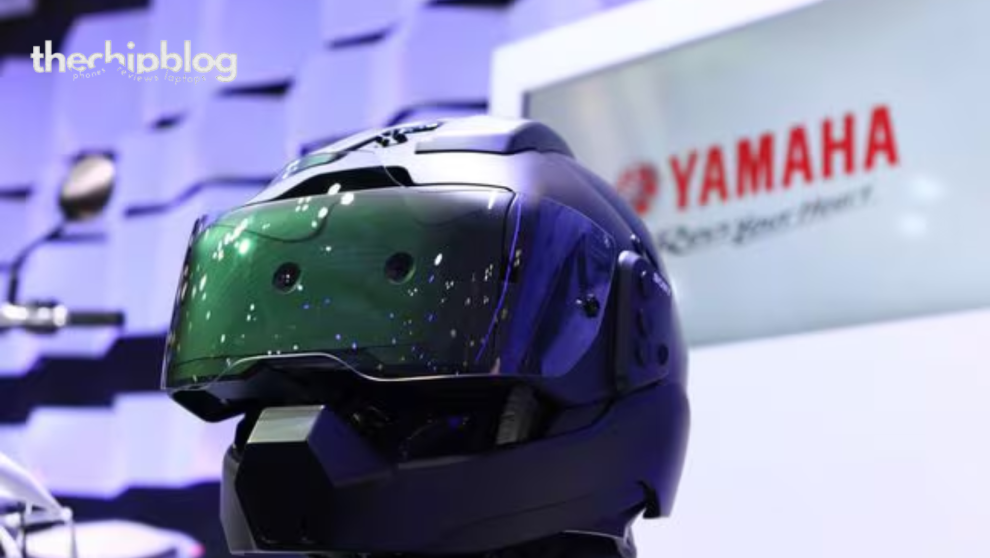Safety and innovation are at the forefront of every rider’s mind. Yamaha, a renowned name in the industry, is pushing the boundaries with its groundbreaking augmented reality (AR) helmet patent. Imagine a motorcycle helmet that seamlessly overlays crucial information onto your field of view, enhancing your ride without compromising safety. This isn’t a mere fantasy; it’s a concept that could soon become a reality, revolutionizing the way we experience motorcycling.
A Glimpse into the Innovative Technology
Yamaha’s AR helmet design takes a unique approach, ditching the bulky screens that completely cover your eyes. Instead, it incorporates a clever system that utilizes internal cameras, external sensors, and transparent display technology. Here’s a breakdown of the key components:
- Internal Cameras: Tiny cameras, potentially two for each eye, are mounted on the rim of the AR glasses positioned behind the visor. These cameras work in conjunction with infrared light to track your eye movements with precision.
- External Cameras: Cameras mounted on the helmet’s exterior capture real-time footage of the road ahead, providing a comprehensive view of your surroundings.
- Processing Unit: A powerful processing unit onboard the helmet analyzes the data from the internal and external cameras, determining where your gaze is directed in relation to the real world.
- AR Overlay: Based on this analysis, the system superimposes relevant information onto your field of view through a transparent display technology integrated into the visor, ensuring a seamless and unobtrusive experience.
Enhancing the Riding Experience with AR
The potential applications of Yamaha’s AR helmet are vast, promising to enhance the riding experience in numerous ways. Here are some exciting possibilities:
- Navigation: Imagine seeing turn-by-turn navigation instructions displayed directly on your visor, eliminating the need to glance down at a traditional GPS device.
- Blind Spot Detection: The system could identify vehicles in your blind spots and visually highlight them on the visor, significantly improving your situational awareness and safety.
- Speedometer and Vital Stats: Essential information like speed, fuel level, and engine RPM could be displayed directly within your line of sight, allowing you to keep your focus on the road.
- Warnings and Alerts: The helmet might display critical warnings such as low tire pressure or engine malfunction notifications right on the visor, ensuring you never miss crucial alerts.
Benefits and Potential Challenges
The potential benefits of Yamaha’s AR helmet are undeniable. It could significantly improve rider safety, comfort, and overall riding experience. However, there are also some challenges to consider:
- Cost and Integration: Developing and integrating this cutting-edge technology into a commercially viable helmet could be an expensive endeavor.
- Field of View and Clarity: Ensuring a clear and unobtrusive AR overlay within the rider’s field of view is crucial, as any obstruction could pose a safety risk.
- Distraction and Safety Concerns: While designed to enhance safety, the implementation of the AR display must be carefully considered to avoid distracting riders and potentially compromising their focus on the road.
The Road Ahead for AR Motorcycle Helmets
Yamaha’s AR helmet concept offers a tantalizing glimpse into the future of motorcycle safety and technology. While a commercially available version might still be some time away, this patent demonstrates the innovative thinking and commitment to rider safety within the industry. As technology continues to mature and these challenges are addressed, AR motorcycle helmets have the potential to revolutionize the riding experience for the better.
It’s important to note that Yamaha isn’t the only player exploring AR helmets. Other motorcycle manufacturers and technology companies are likely working on similar concepts, each bringing their unique approach and innovations to the table. The future of motorcycling might see a range of AR helmet options catering to different needs and preferences, fostering healthy competition and driving further advancements in this exciting field.
Conclusion: Embracing the Future of Motorcycling
Yamaha’s AR helmet concept sparks the imagination and paves the way for a future where technology seamlessly integrates with the riding experience. While challenges remain, the potential benefits for safety and rider experience are undeniable. As technology advances and companies continue to push the boundaries, we can expect to see more groundbreaking developments in this field, ultimately leading to a safer, more connected, and more exhilarating future for motorcyclists worldwide.
“`
















Add Comment